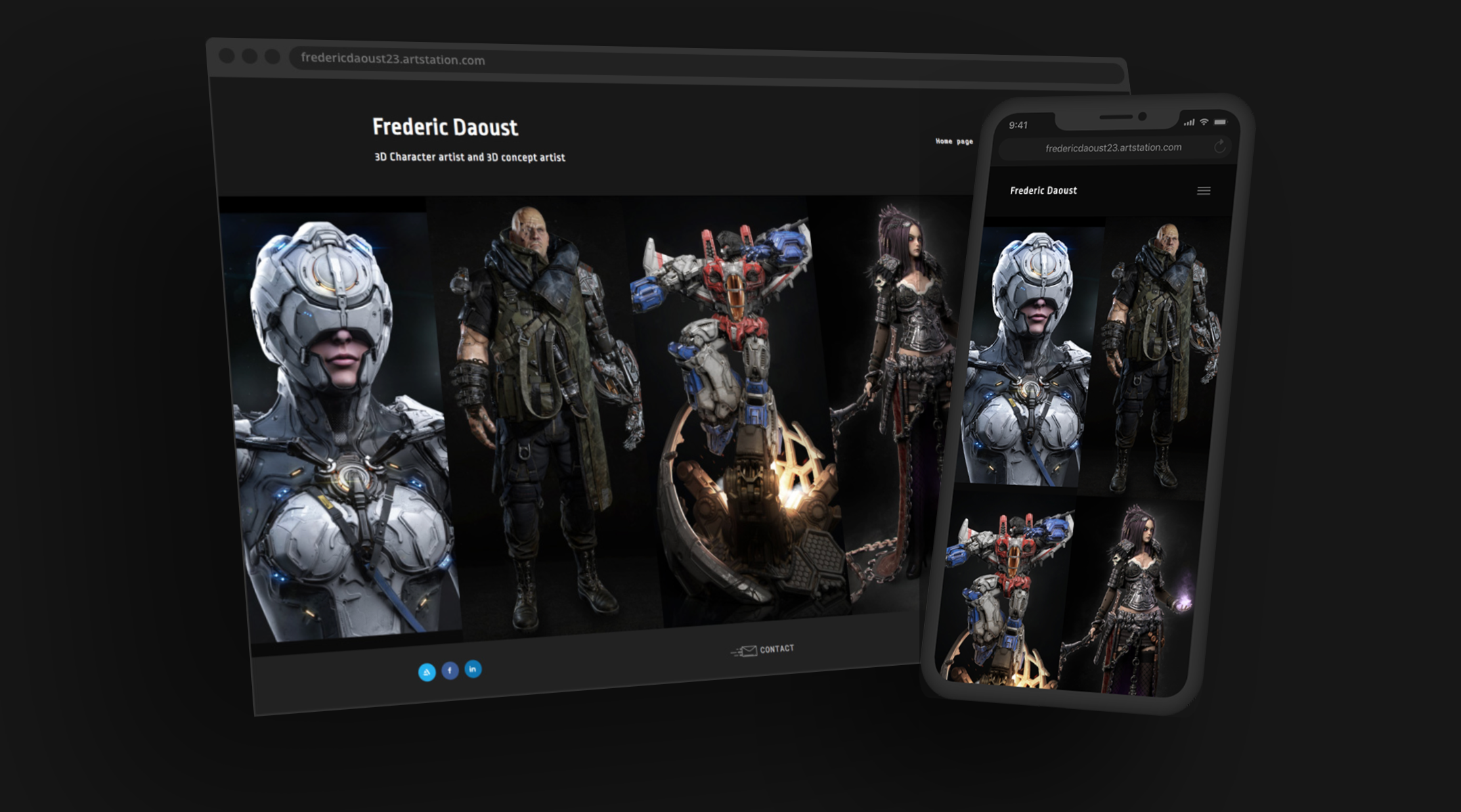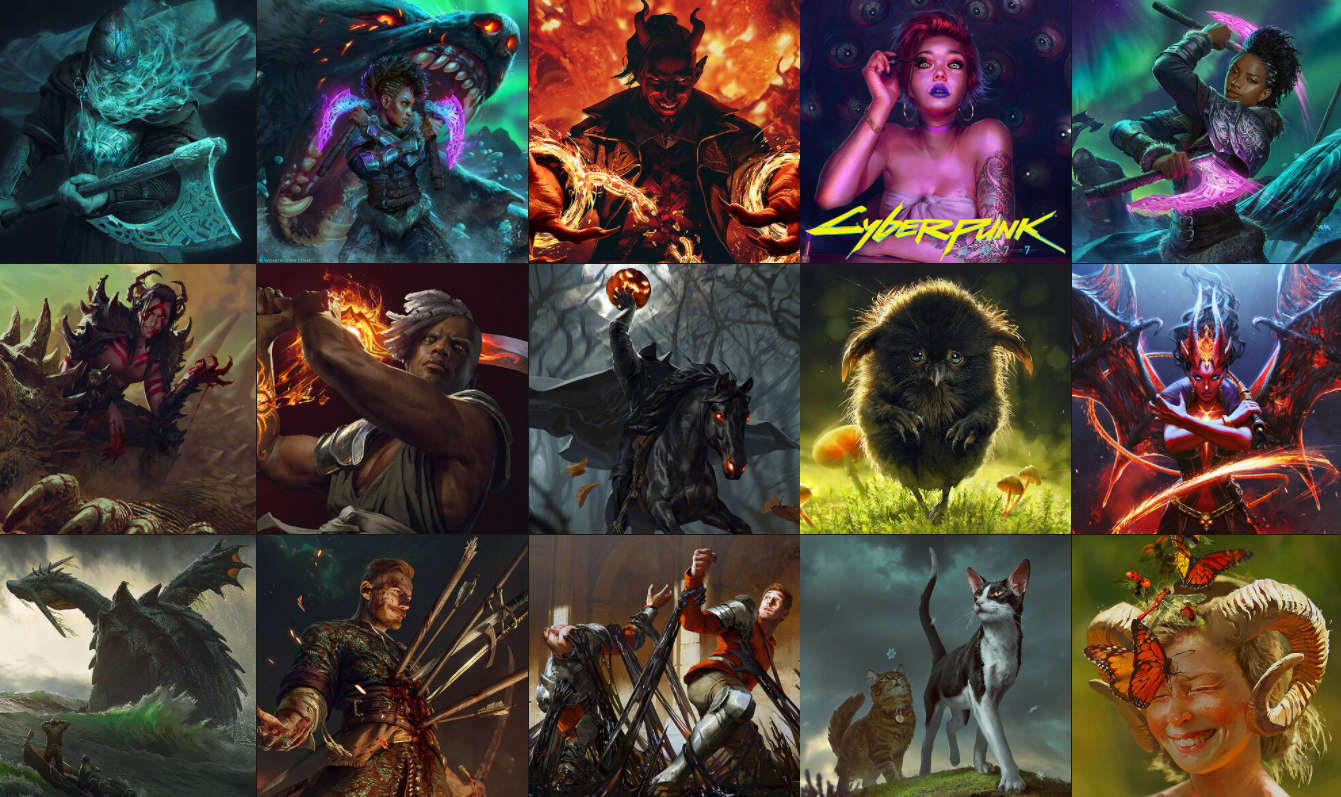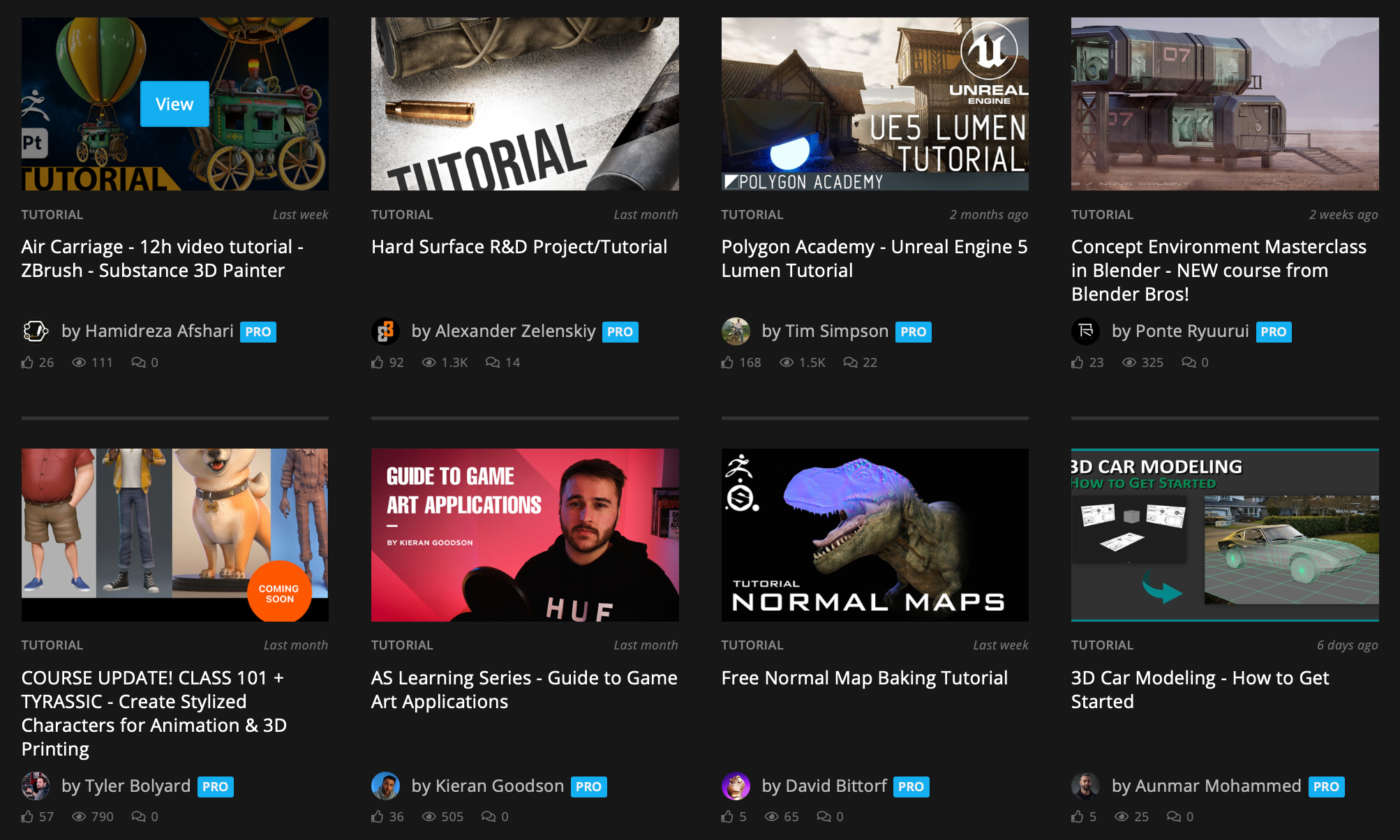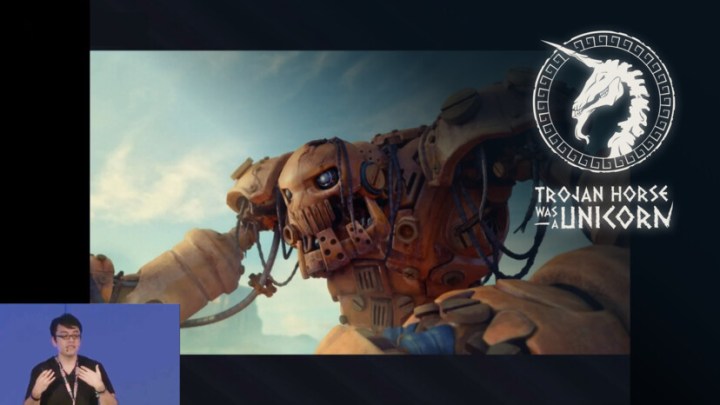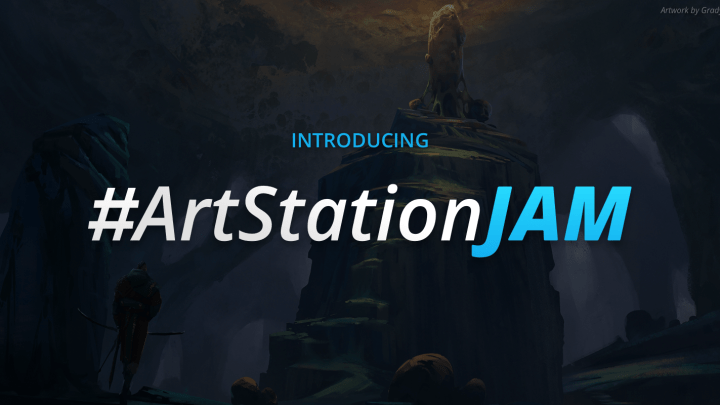9 Portfolio Tips for Game Artists in 2021
It’s important to stay on top of new trends and expert advice when crafting your professional portfolio for an industry that’s always changing.
Long-time readers might remember that we’d previously covered game art portfolio tips from top art directors and lead artists presenting at Game Developer’s Conference (GDC) 2019. Last week, we had the opportunity to virtually attend GDC 2021’s latest addition to the “Killer Portfolio or Portfolio Killer” series. We’ve rounded up a list of nine key takeaways from this panel that will help you craft a portfolio that’s relevant and unique!
Panelists
Greg Foertsch, Art Director, Romero Games
Rachel Day, Lead Visual Effects Artist, Bonfire Studios
Chris Sulzbach, Lead Character Artist, Zenimax Online Studio
Gavin Goulden, Art Director, Insomniac Games
Tip #1: Show that you’ve mastered the fundamentals.
It can be daunting to know where to start when creating your portfolio. A solid place to begin is with your creative fundamentals.
Exhibiting a good understanding of anatomy, scale, lighting, and other basic concepts will tell the employer that you’ll be able to adapt those concepts down the line as needed. Many software tools used in the studio today try and minimize onboarding, so it’s generally more important to show you know how to make good art consistently rather than master a single technology.
“Software can always be learned. Learning taste, timing is harder.”
Rachel Day
Tip #2: Know the game art pipeline.
It’s also important for game artists to show that they understand the game development pipeline, and where their art will fit in it. Give your character designs a turnaround; show that your 3D models are animation-friendly. In this way, you’ll demonstrate that you’re an efficient and capable game artist.
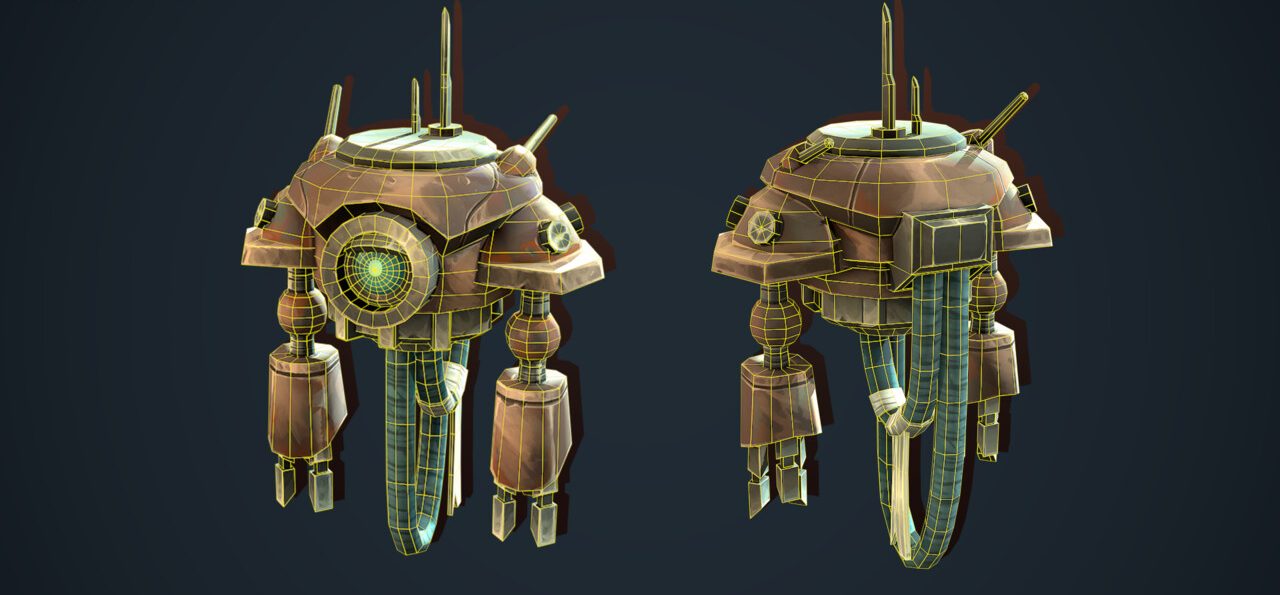 Artwork by Grand Space Opera: Light Age 2nd place Prop Art (rendered) winner Lucile Thyrard
Artwork by Grand Space Opera: Light Age 2nd place Prop Art (rendered) winner Lucile Thyrard
Tip #3: You’re only as strong as your weakest piece.
A returning tip from our last advice roundup: artists should carefully select their portfolio works. 3-5 well-polished artworks can be much more powerful than 10+ unfinished pieces.
It might seem hard to compress your hard work down to just a few images, but showing the ability to self-edit your portfolio will tell an employer you know what good art looks like. Slipping in lower-quality work will make you seem inconsistent. Chris Sulzbach recounted that he once hired an artist based on a single 3D trash can!
Tip #4: Keep it simple.
It can be tempting to try and perfect an elaborate style, but the GDC panelists advised that your style will likely continue to develop over time. Being able to adapt your style on the fly is important, and it might even be advisable to tailor your portfolio style to match the studio you’re applying to.
Rachel shared that one of the most memorable demos she had ever seen demonstrated VFX animations with a minimal character silhouette and plain background; it was “simple, to the point, without extra distractions.”
Artwork by Yuyuan Lin.
Tip #5: Make sure your portfolio matches the job you’re applying for.
One of the pet peeves that panelists mentioned is getting portfolios that don’t clearly match the job being applied for. For example, including high-detail character sculpts and no game art when applying for a game art job, or including a demo reel when your portfolio is about static character designs.
Greg suggests that as a rule of thumb, only include a demo reel if the work in your portfolio moves. Otherwise, consider an embedded 3D model viewer like Sketchfab.
Tip #6: Presentation is an under-looked piece of the portfolio puzzle.
You should make sure that your portfolio is clearly yours through appropriate branding. Your presentation should be clean, recognizable, and with all of your contact information easily visible. You can go the extra mile with your ArtStation account by setting a custom thumbnail image, adding a header image, and more—check out this article for more ideas.
“Make your thumbnail on ArtStation pop.”
Rachel Day
Artworks by Anna Podedworna
Tip #7: Your portfolio is your first impression. Make it count.
All of the panelists described your game art portfolio as being the first and most important impression you’ll make on a prospective hiring manager. You’ll get an additional chance to let your personality shine through in the interview stage, since by that point the person doing the hiring will already have known you can make good art. Focus on making your portfolio a clean, professional demonstration of your abilities that stands above the hundreds of other competitors out there.
Tip #8: Connect with the creative community.
Professional artists don’t work in a vacuum, and neither should you. Surround yourself with inspiration and talent that lifts you up. Reach out respectfully to artists you admire to learn about their processes, seek mentorships, blog, and/or participate in community events to better improve your artistry and portfolio.
Regularly blogging is a great way to connect with other artists.
Tip #9: It’s a competitive industry. Be prepared, not discouraged.
It’s a journey to get your first job in game art, and everyone’s journey will unfold differently. “One of the best concept artists I know got turned down five times before he got a job,” Greg Foertsch told panel attendees. Don’t be discouraged if you don’t get an immediate response on your first few applications, or even face outright rejection on them.
Greg suggests that you keep your eye on what level of quality it took others to get into the profession you want. That way you’ll have a target to set your sights on, and an understanding of what employers in the industry are expecting from candidates.
ArtStation is the go-to standard, everyone goes there. Look at ArtStation to see what the competition is like and what bar you need to hit.
Greg Foertsch
 Sandra Duchiewicz‘s portfolio website
Sandra Duchiewicz‘s portfolio website
If you’ve not already done so, consider getting started with an ArtStation website to host your portfolio. This is a quick, easy, and FREE way to create an industry-ready portfolio!
ArtStation Plus and Pro subscribers also have access to unique premium customizable themes for their websites.
